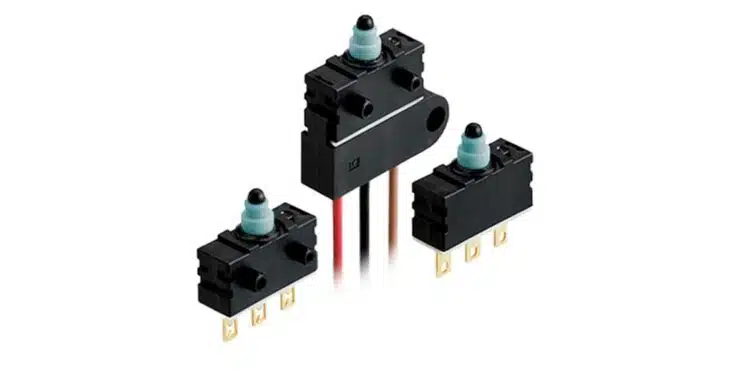Panasonic Industry has recently introduced the ASQD1 series of Seal Type Sliding Switches, a new state-of-the-art line of micro switches designed for enhanced reliability and efficiency across various applications.
Double the functionality, half the footprint with three types to choose from: Failure Detection Type, Two-Step Detection Type, Redundancy Type
The durable ASQD1 series components benefit from dual internal circuits, allowing for failure detection, redundant circuit design, and two-step detection due to its flexible circuit setup. The design optimizes space and reduces the need for multiple switches, streamlining assembly, and terminal connections.
The new product range features three different setups:
- Two-Step Detection Type
- Redundancy Type
- Failure Detection Type
The Two-Step-Detection Type realizes the idea of detecting two operating points with one single switch. It offers an interesting alternative for many latch applications which require detection of pre- and final closing. This solution supports customers’ needs to minimize size and component cost in the application. Design-in will be simplified because of the reduced tolerance chain.
The Redundancy Type Switch integrates two internal circuits into a compact unit, ensuring continued operation even if one circuit fails. It is the first time that such a concept has been realized with a three-terminal switch.
The Failure Detection Type Switch identifies wiring and internal circuit failures. Functional safety will be the main reason to use this solution. Immediate feedback about what kind of failure happened is a must for this kind of application.
ASQD as a further development of the sliding switch line-up from Panasonic also features: silent operation, high contact reliability, long stroke, excellent shock- and vibration resistance, IP67.
































